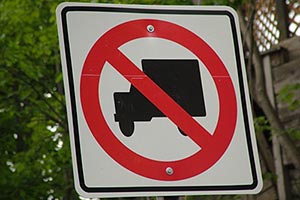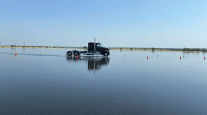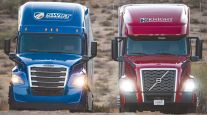Washington Town Mulls Restricting Trucks

The Vancouver, Washington, City Council is expected to discuss an ordinance at its July 18 meeting that would prohibit trucks above a certain size from moving freight on 39th Street.
A city study found truck traffic nearly tripled on 39th Street after November 2010, when the state-built $19 million bridge spanning the railroad tracks near Fruit Valley Road opened.
“The idea is not to allow 39th Street to be used as an east-west freight corridor because of the neighborhood livability issues,” Patrick Sweeney, principal transportation planner for Vancouver, said during a June 6 city council workshop.
The ordinance likely would be limited to large freight trucks. Those used for store deliveries and home deliveries would not be affected.
RELATED: West Virginia Supreme Court Says Town Can’t Ban Trucks
The ordinance would require an investment in road signs, and the city plans to request that the Washington State Department of Transportation place signs about the new rule on Interstate 5.
“It’s not a slam dunk to get the signs on I-5,” Sweeney said during the workshop. “But us getting an ordinance passed and making modifications to our arterial maps … sends a definite sign that 39th isn’t like any other arterial.”
Vancouver is no exception when it comes to the challenges faced by growing communities as they struggle to balance livability and commercial activity.
With businesses growing in downtown and at the Port of Vancouver, large trucks have become, for many living nearby, an unwelcome but common feature of neighborhood streets on the west side. The city is trying to address the problem with the Westside Mobility Strategy to balance the growth of commerce with the needs and desires of residents.
RELATED: Massachusetts Mayor Vetoes Heavy-Trucking Ban
The goal of the program is to improve safety, manage arterial streets to preserve neighborhood livability and create efficient and reliable freight routes and transportation road performance. The city wants to improve Main Street and complete connections in the city’s bikeway network. City planners also want to make walking safer and easier on the west side. They also want to build partnerships to work at replacing the Interstate 5 Bridge.
The city categorized projects related to each goal that could start within the next three years, three to six years, and six or more years, according to a final mobility strategy report released in late May. Dates and timelines for most of the projects still are being developed.
One of several ideas under consideration to improve freight is the realignment of Jefferson Street with Kaufman Avenue at West 13th Street downtown.
Rather than focusing on each street as an individual corridor, the city plans to analyze future traffic and manage roads as a network. That network includes Mill Plain and Fourth Plain boulevards and 39th and 78th streets, which all run east-west, and Main, C and Columbia streets, Lincoln and Kaufmann avenues and Fruit Valley Road, which run north-south.
An example of proposed networkwide changes includes changing stoplight timing. Stoplights currently favor east-west traffic, but residents requested more north-south green light time during off-peak hours, such as evenings and weekends.
“This is a long-term endeavor, but this is something that would help balance livability on the west side with the mobility needs of east-west freight,” Sweeney said.




